FairScope was honored to attend the ICES-IOC Workshop on Automated Plankton Analysis in Oslo, an invitation kindly made by Wenche Eikrem, Thibaut's former supervisor. The workshop convened the European IFCB Network and the Nordic Marine Phytoplankton Group, along with international colleagues, at the picturesque Tøyen hovedgård, part of the Oslo Natural History Museum.
A Collaborative Workshop
Over three days, the event fostered a rich exchange of expertise in automated plankton imaging, covering critical areas such as harmful algal bloom monitoring, AI-driven species recognition, and the development of robust data-sharing infrastructures.
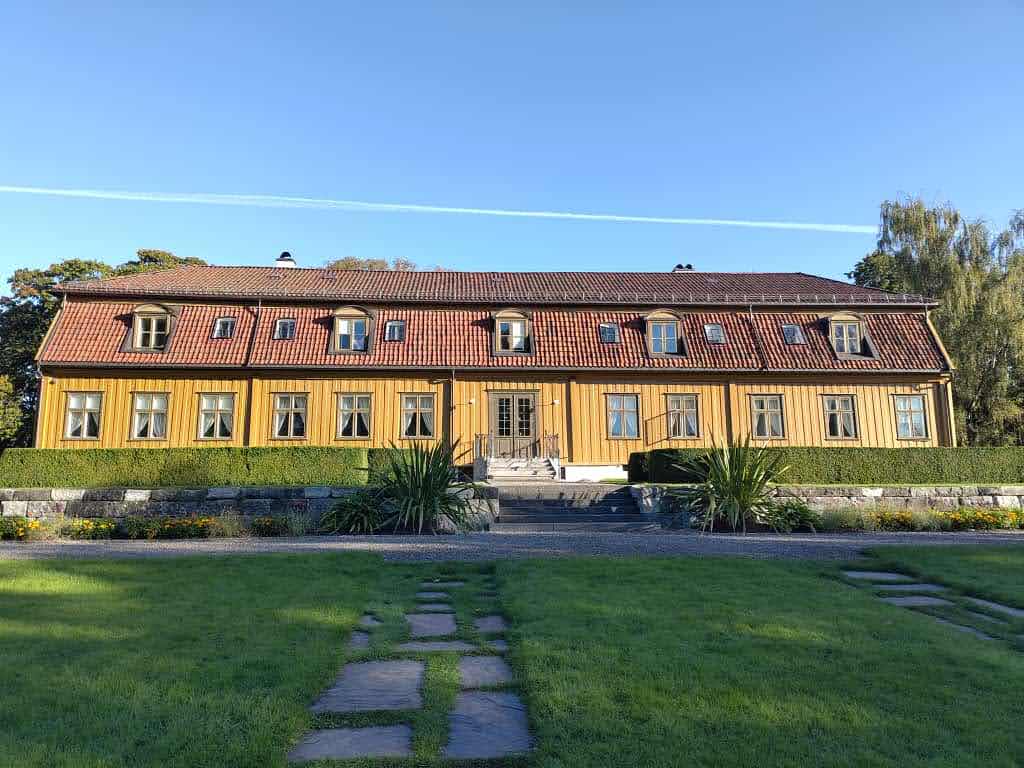
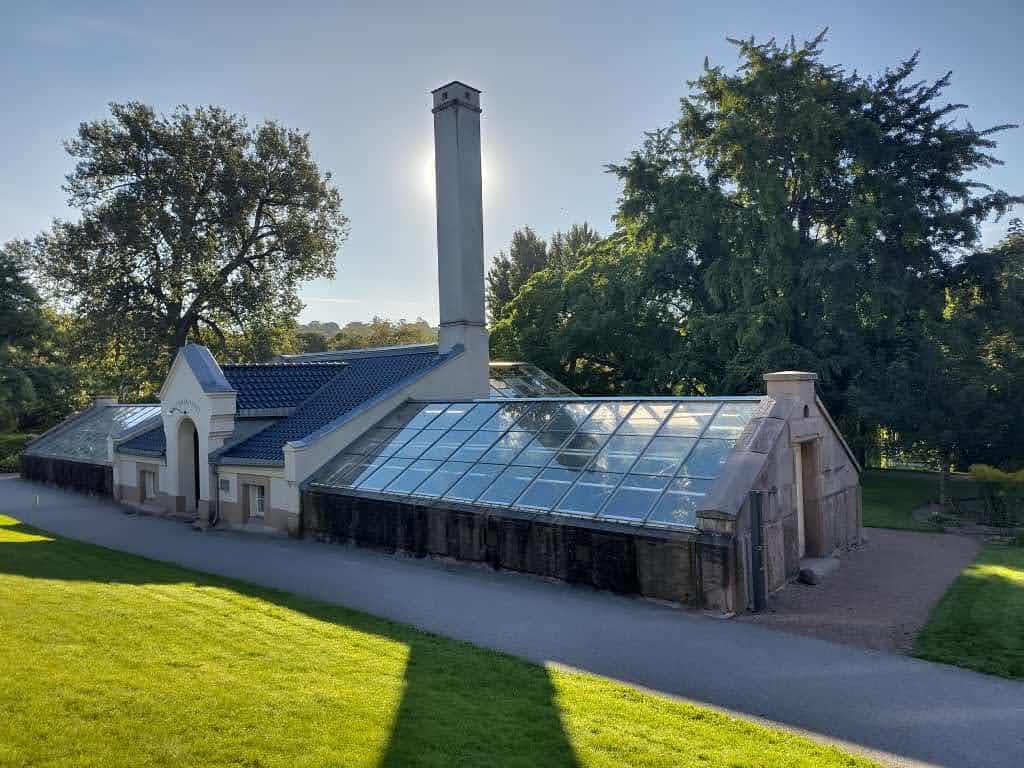
Thibaut was delighted to present the PlanktoScope and expose its capacity to complement existing imaging systems. Sharing its frugal and open-source philosophy within this network of advanced IFCB users was both inspiring and humbling.
Inspiring Encounters
The workshop provided a valuable opportunity to connect with highly knowledgeable individuals in plankton imaging. Among them were Margaret R. Mulholland from Old Dominion University, who has extensively deployed the PlanktoScope for monitoring Harmful Algal Bloom (HAB) events; Sophie Clayton from National Oceanography Centre one of the first to replicate the PlanktoScope; Ankita Ravi Vaswani from HFMI - Helmholtz Foundation Model Initiative, leading efforts to build an AI foundation model trained on plankton image data, notably leveraging PlanktoScope datasets., and Pascal CLAQUIN, co-manager of PHYTOBS, the French national network for microphytoplankton monitoring. Only a very incomplete list of the remarkable individuals I’ve had the honor of meeting with.
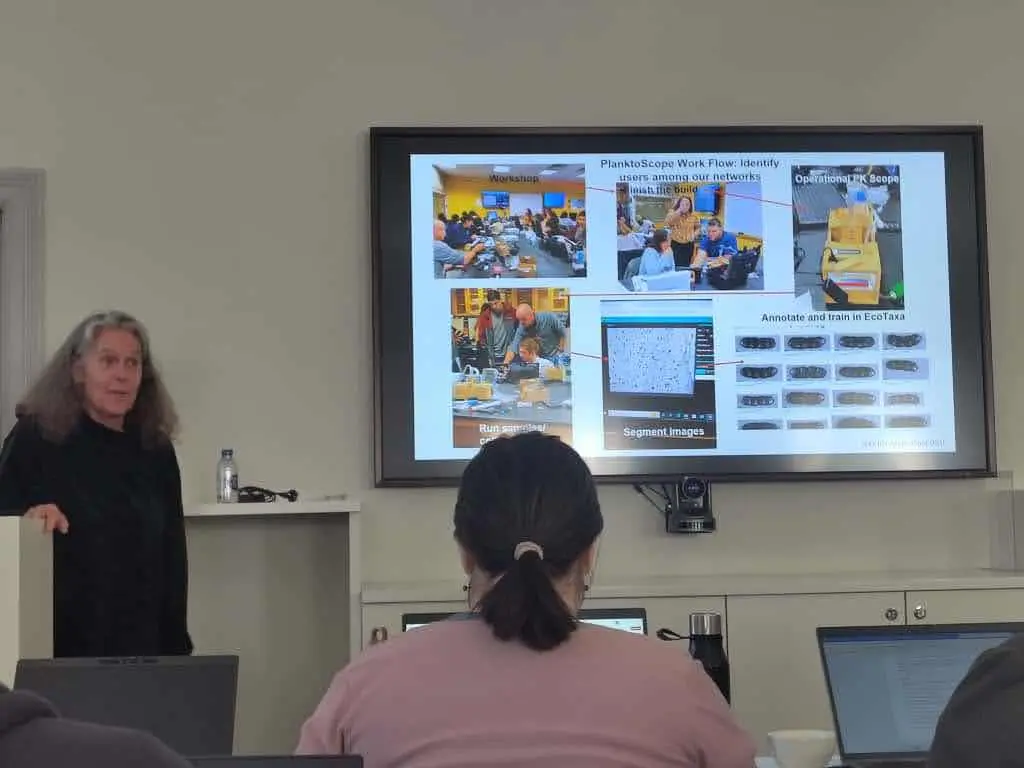
Margaret R. Mulholland from Old Dominion University presenting during the ICES-IOC Workshop. The presentation slide behind her illustrates the PlanktoScope workflow, from community workshops and instrument builds to image segmentation and annotation in EcoTaxa.
Ankita Ravi Vaswani from the Helmholtz Foundation Model Initiative presenting during the ICES-IOC Workshop. Her talk introduced the AqQua project, focused on building an aquatic life foundation model using global plankton imaging datasets, with slides showing worldwide deployments and advanced imaging instruments.
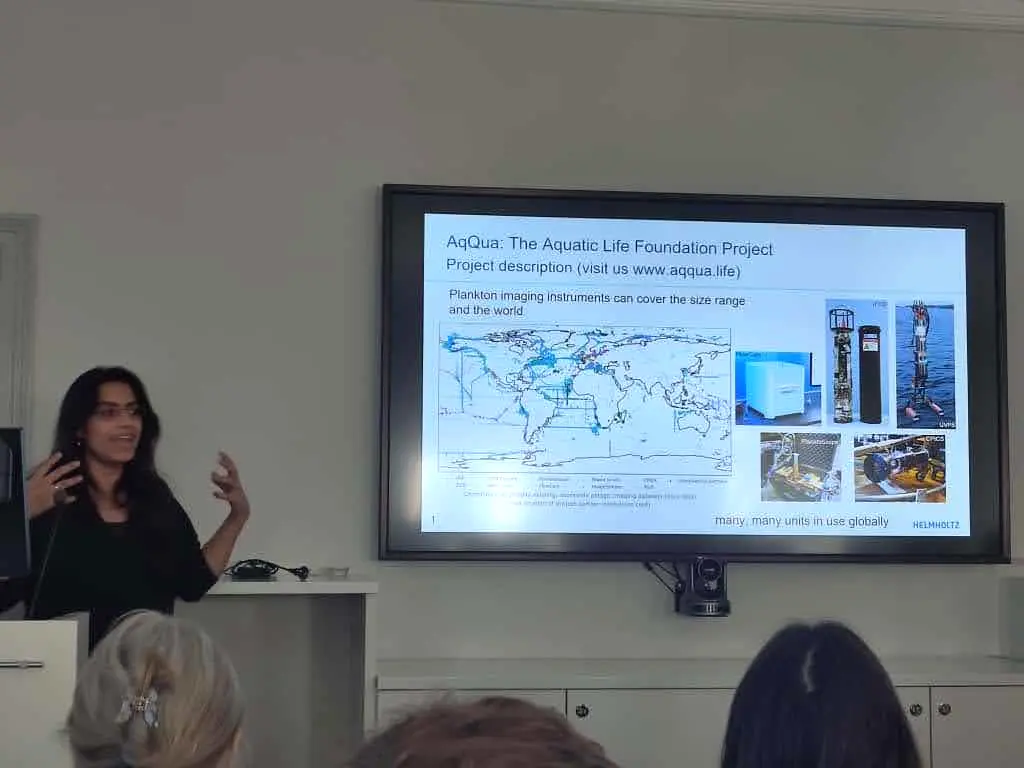
Demonstration of the PlanktoScope
The collage below was made from a sample collected with a plankton net in the small pond of the museum’s garden. Using the PlanktoScope Thibaut carried in his backpack, he was able to image the sample right after collection, producing results within a few minutes during the demo. This direct, hands-on experience was a vivid demonstration of the PlanktoScope’s accessibility and readiness for field use — a modest but meaningful reminder of the diversity of life all around us, even in the quietest corners of nature.
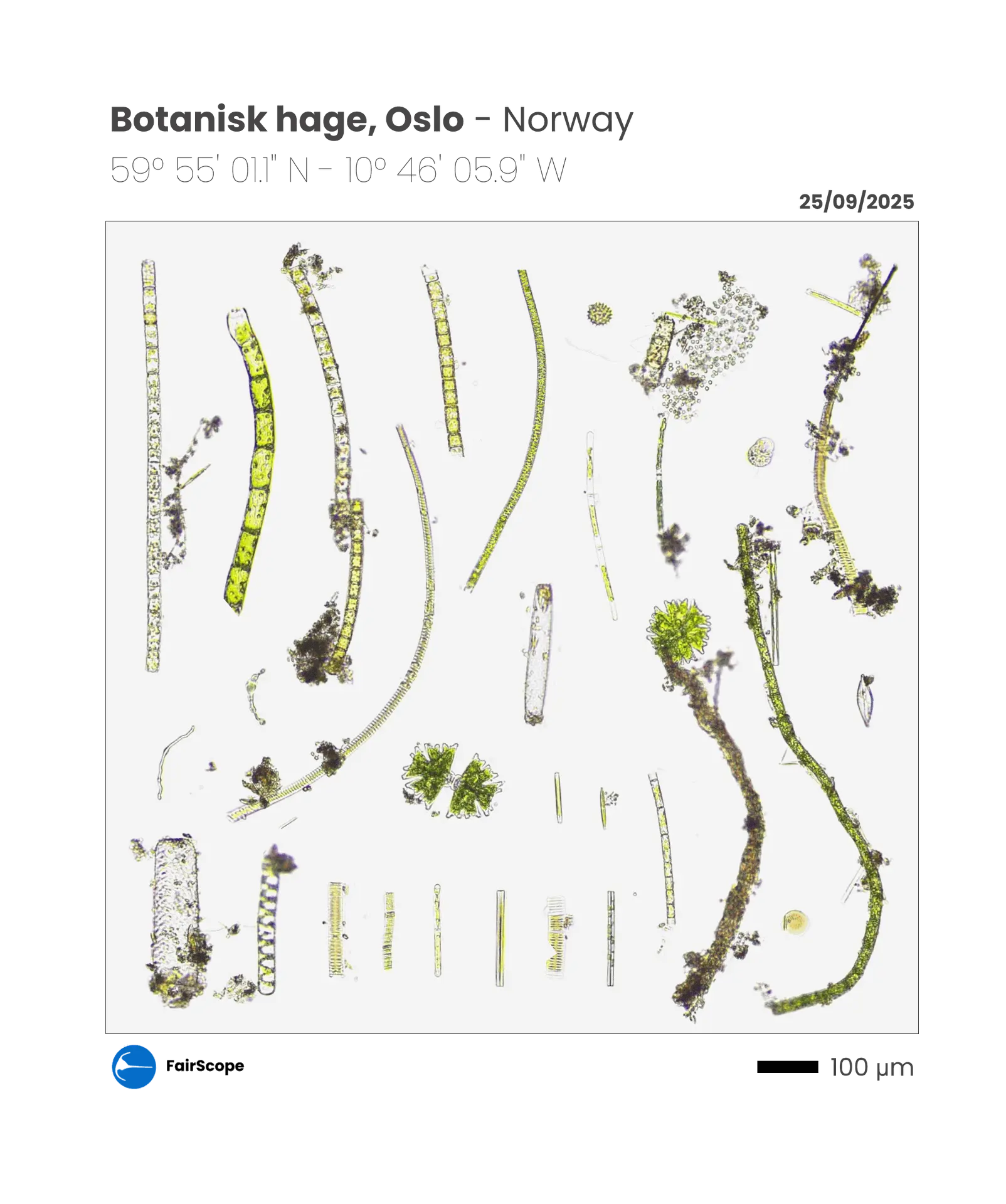
FairScope is grateful for the chance to reconnect with old mentors and meet so many passionate colleagues shaping the future of plankton observation. A warm thank you also to Bengt Karlson, co-convenor of the workshop, for the kind invitation and leadership.

📸 Header photo: “Victoriahuset greenhouse of Oslo Botanical Garden,” by Øyvind Holmstad, Wikimedia Commons, licensed under CC BY-SA 4.0.